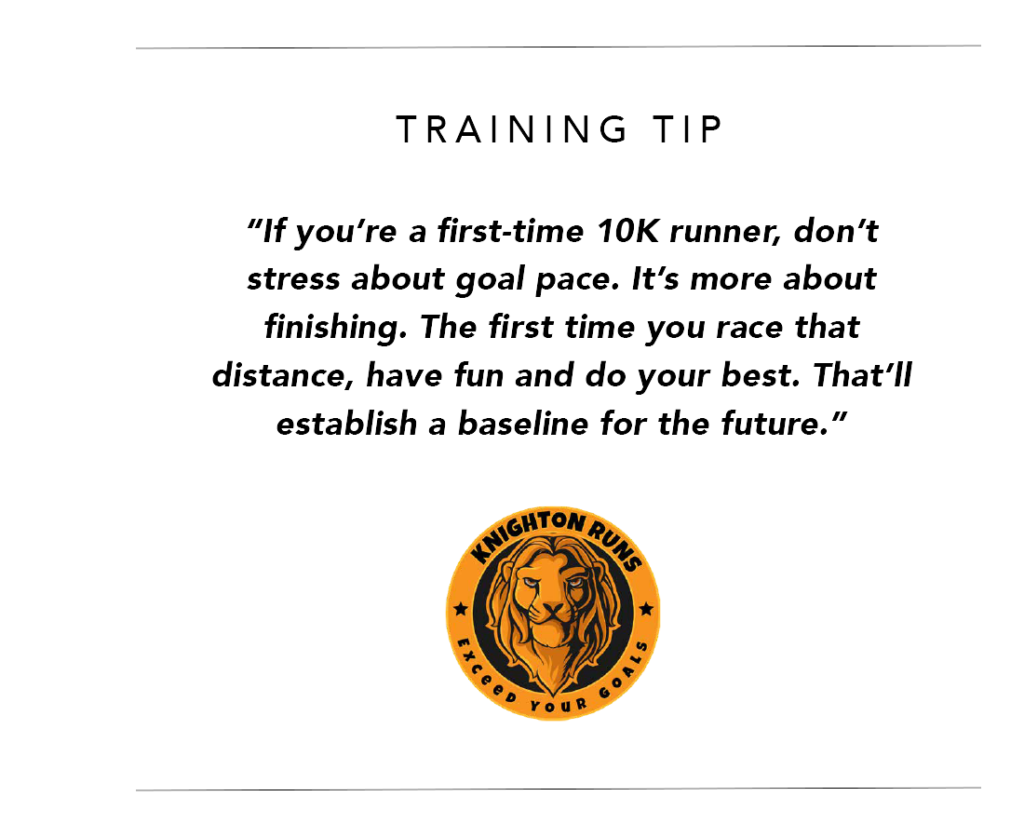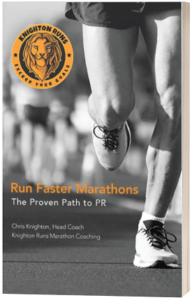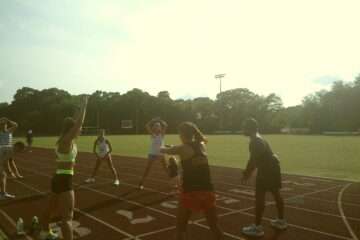A Fun Change of Pace, the 10K Race
How to make the leap from a 5k to a 10k

This post was written by Coach Erica Knighton.
Have you given the 5k distance a try and want a new challenge? Are you ready to race a longer distance? Give the 10k a try!
Chris recently contributed to an article on Runner’s World website about how to run your best 10k by finding the correct race pace for you. As we enter 2021, many Knighton Runs athletes are setting goals for the year and looking to find success at new distances. In the space between a 5K and the half marathon lies the 10K, a distance that caters to recreational runners and serious competitors alike. If you are looking for a new challenge, I suggest you do a 10k to build speed, strength, and endurance – and to enjoy a fun change of pace.

To run your best 10k, make sure to follow these simple guidelines:
Have a Plan
The key to a successful 10k race is having a plan. Not just any plan, a training plan. The difference between running for fitness and training for a 10k race is that every run has a purpose. Following a training plan that fits your lifestyle and specific goals will give you the blueprint for success. I suggest giving yourself at least 10 weeks to prepare. It’s important to let your body absorb training and adapt to it. If you’re not quite ready to jump into 10k training try building your base first with the Knighton Runs Base Building Plan.
Run Slow to Run Fast
In order to run farther for the 10k distance, you will also need to run easy during many of your training runs. As you work your way through your 10k training program, you will be gradually pushing towards longer distances. The secret is balancing your training to allow your body time to recover between hard efforts. This will get you stronger. Running easy translates to a stronger, faster, and longer run down the road. Don’t worry about your pace on easy running days. Go slow and you will get faster down the road.
Be Consistent
A solid 10k race is not made from a handful of good runs, but rather the sum of good, bad, and even ugly workouts. As you make your way through your training program, remember that not every run will be perfect. Even elite runners have tough running days. Don’t let a bad day derail your training. It’s all part of the training process and breaking through to your running best. The great workouts will build confidence, the challenging runs will develop mental strength, and all of them combined will get you to the finish line.
Train your mind
Training is mostly physical and somewhat mental. Establish a good routine and just trust the process. Race day is the exact opposite. Your mind runs the show. The number one mistake runners make on race day is to go out too fast, expending too much energy in the first few miles, and then crashing and burning towards the end. This lends itself to a fantastic first 5k and a terrible finish line photo.
In the final five weeks of training, dedicate one run per week to running a negative split. That is, cut the distance in half, run the first half easy, and gradually dial up your pace until you’re at a comfortably hard effort for the final half-mile.
Run Efficiently
Rest up for race day by cutting your total mileage and intensity down. Remove your strength-specific workouts in the final week before the race. Running workouts during race week are all about keeping your legs loose. They should be short (20-40 minutes) in duration and relatively easy in intensity.
Finally, at every mile marker in the race, take a head-to-toe inventory of your running form. Keep your head, neck, and shoulders relaxed. Your arms should swing like a pendulum from the shoulder with bent elbows and relaxed hands. Your hips should be in alignment and under your shoulders (think: “run tall”). Keep your feet striking with short, quick strides.
—
Where to find your next 10k race?
Check out runningintheusa.com.



